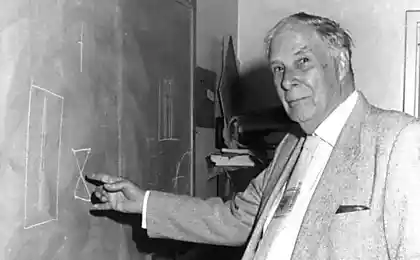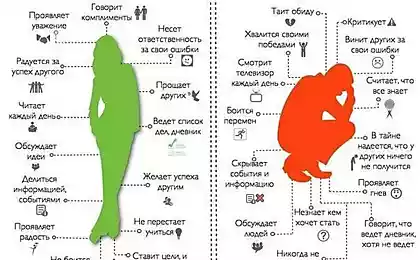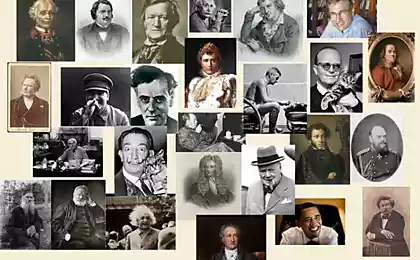197
The story of one discovery: how chance led to a scientific breakthrough

Accidents are often the driving force behind scientific progress. Sometimes an unexpected find or a strange coincidence leads to a breakthrough that changes the world. Moreover, history knows many similar episodes - from the appearance of the microwave oven to the discovery of the principle of X-ray radiation. But one of the most striking examples is the discovery of penicillin by Sir Alexander Fleming, an accidental discovery that literally upended medicine and saved millions of lives. In this article, we’ll look at how a carelessly abandoned petri dish kick-started a new era of infectious disease control, and discuss why such “accidents” actually happen most often where the mind is prepared for discovery.
We will not be tied to specific dates, because the history of the discovery of penicillin has been known for a long time, and many studies continue to delve into the details of this phenomenon. Our aim is to show how the “engineering of chance” (or, if you will, “organized chaos”) of science can lead to radical change. The material is intended for a wide audience who wants to immerse themselves in the world of scientific discoveries and understand how chance plays a role in the development of civilization.
The origin of the idea: who is Alexander Fleming
Alexander Fleming (1881–1955) was a Scottish biologist and pharmacologist whose work focused on studying bacteria and finding ways to fight infections. Around the first quarter of the twentieth century, he worked at St. Mary’s Hospital in London, where he studied various antiseptics and microbial cultures. Humanity at that time already faced serious problems of bacterial infections, especially during periods of war and epidemics.
- The context of time: In the early XX century, doctors tried to treat bacteria with antiseptics and serums, but there were no special antibiotics. Infections such as pneumonia, sepsis, etc. were often a sentence.
- Fleming's personality traits: His colleagues noted that he was “not very careful” in the lab, but curious and observant — two traits that played a key role in his discovery.
The Case That Changed the Course of Medicine
The summer of 1928 was a turning point for Fleming. On a short vacation, he left cups of bacterial cultures (Staphylococcus aureus) in his laboratory, believed not to be too licked by today’s sanitary standards. When he returned, he found that in one of the cups, mold (which we now know as Penicillium notatum) literally sprouted and surrounded colonies of bacteria. Surprisingly, bacteria were either absent or destroyed around the mold.
Many could ignore this “dirty” and simply throw away the cup, but Fleming noticed that the fungus secretes a substance that kills bacteria. He called this active substance penicillin.
- Key point: Fleming's curiosity led him to conduct additional experiments. He tested whether penicillin was actually effective against other microbes and how resistant it was.
- First difficulties: Isolation of penicillin in its pure form was not an easy task. Fleming did not have the technical resources to consistently produce the drug in large quantities, so the initial "push" of discovery for some time did not find widespread application.

The development of discovery: the transition from observation to mass production
Fleming’s ideas remained on the periphery of science until the late 1930s, when a group of scientists led by Howard Florey and Ernst Chain set out to mass produce penicillin. At this time, before and during World War II, there was an urgent need for a tool that could save the lives of soldiers with bacterial wounds.
- Industrial breakthrough: Florey, Chain and their team have developed ways to isolate and purify penicillin on a scale that can be treated. Since 1941, trials began and soon the antibiotic became widely used.
- Result: Mortality from bacterial infections among wounded soldiers and civilians has plummeted. According to medical historians, this has become one of the largest factors in reducing post-traumatic complications.
Why Accident in Science Is Not Just Luck
The discovery of penicillin is often cited as an example demonstrating the role of “accident” in science. But it is worth noting that such a “lucky accident” is only the tip of the iceberg. Scientists who notice or develop these "random observations" already have a ready mind, know how to ask questions, and do not ignore anomalies.
- A trained mind: Fleming was aware of the existing difficulties in treating bacterial infections and immediately understood the significance of the phenomenon seen in a petri dish.
- Openness to surprises: A huge array of accidents around us just pass by, because we don’t ask ourselves “what if...”
- Interdisciplinarity: Sometimes it takes a team effort (as in the case of Florey and Chain) to turn a “miracle” into a usable technology.

Examples of other “accidents” that have changed science
Although penicillin is the best-known example, the history of science knows other examples that “accident favors the prepared”:
- X-rays (Wilhelm Roentgen): While studying cathode rays, Röntgen noticed a “strange glow” without waiting to discover a whole spectrum of electromagnetic radiation. It turned out that this was how X-rays were detected.
- Microwave oven: Engineer Percy Spencer, working with a magnetron, discovered that the waves melted a chocolate bar in his pocket. So the idea of “cooking with microwaves” was born.
- Velcro (Velcro): Swiss engineer Georges de Mestral noticed that the burdock clings to the dog's clothes, and developed a textile clasp.
Conclusion
The history of penicillin, like many other discoveries, shows that science is not only a meticulous plan and a rigorous method, but also a share of creative unpredictability. The “accident” here becomes the catalyst that gives rise to thinking beyond the familiar. But most importantly, this “accidental finding” bears fruit only where there is a “prepared mind”, curiosity and the desire to check the amazing detail, and not throw it away with a “cluttered” petri dish.
These results led to hundreds of hours of work, observations and analysis, and the transition from the idea to the widespread introduction of antibiotics took the efforts of a generation of scientists and technologists. Therefore, the discovery of penicillin is a symbiosis of accidental discovery and hard work, which led to a real scientific breakthrough that saved millions of lives during and after wars.
Many discoveries teach us not only specific medical or technical innovations, but also an important method of scientific knowledge: an open view of everything unusual, the ability to ask yourself questions and notice “system failures” that can be a guide to something big. This is how true scientific revolutions are born – sometimes because of a carelessly forgotten petri dish, which suddenly becomes a window into a new era of medicine.
How to maintain health and energy for years to come
The Dark Side of Perfectionism: How to Free Yourself from the Eternal Pursuit of Perfection























